Materials: 1. Water 2. A Clear Plastic Bottle 3. Vegetable Oil 4. Food Coloring 5. Alka- Seltzer Steps:

Materials: 1. Water 2. A clear plastic bottle 3. Vegetable oil 4. Food coloring 5. Alka- Seltzer Steps: 1. First, pour water into into the plastic bottle until it's one quarter full 2. Next, pour vegetable oil until the bottle is nearly full. 3. Then, wait until the oil and water have separated. 4. Next, add 12 drops of any food coloring of your choice into the bottle. 5. Then, watch as the food coloring falls through the oil and mixes with the water. 6. Finally, cut a Alka-Seltzer tablet into 6 smaller pieces and drop one of them into the bottle. Lesson: Oil and water do not mix, so the oil stays on top because it has lower density than water. The piece of Alka-Seltzer tablet releases carbon dioxide gas that rises and takes the colored water to the top. The gas escapes and, thus, the colored water falls down. Alka-Seltzer fizzes because it contains citric acid and baking soda, which are reactive with water creating sodium citric acid and carbon dioxide.
More Posts from Funscienceexperiments and Others
Octopuses are smart! They play with toys, pull off daring escapes, and are masters of disguise. But they’re also smart in a lot of ways that the human mind probably can’t comprehend. For example, they basically have independent brains in their arms!

Bill Nye, “The Science Guy”, has some great “home demos” which could certainly be used in the classroom, along with some printable “one sheets”.
#scichat #spedchat #elemchat
Home Demos are found in three categories; life sciences, physical sciences, planetary sciences.
I have added these to Super Science Fair Project Resources
You may also like…
The Surfing Scientist
Hunkin’s Experiments
Windows to the Universe
Welcome to Cosmic Quest

Materials: 1. 9" balloon 2. CD 3. water bottle pop-top cap 4. A hot glue gun 5. Push pin Steps: 1. First, cover the center hole of the CD with a piece of tape and poke 6 holes in the tape with a push pin. 2. Next, use the hot glue gun to glue the cap to the center of the CD. 3. Then, blow up the balloon and pinch its neck. 4. Next, make sure the pop-top is closed and fit the neck of the balloon over the pop-up portion of the cap. 5. Finally, put the craft on a smooth surface and pop the top open. Lesson: The air flow created by the balloon causes a cushion of moving air between the disc and the surface. This lifts the CD and reduces the friction, which allows the CD to hover.

Chemical indicators change color when they come into contact with certain substances. Make your own and film the results.

Materials: 1. A wooden skewer 2. A clothespin 3. 1 cup of water 4. 2-3 cups of sugar 5. A tall narrow glass Steps: 1. First, clip the skewer into the clothespin so that it hangs down inside the glass and is 1 in from the bottom of the glass. 2. Next, remove the skewer and clothespin and put the aside. 3. Then, pour the water into a pan and boil it. 4. Next, pour 1/4 cup of sugar into the boiling water and stir till it dissolves. 5. Then, keep adding more sugar, each time stirring until it dissolves. 6. Next, remove the heat and allow it to cool for 20 minutes. 7. Then, ask an adult to pour the mixture into the jar to the top. 8. Next, submerge the skewer into the glass so it is hanging straight down the miss without touching the sides. 9. Finally, put it somewhere where it would not be disturbed and wait for the sugar crystals grow over the next 3-7 days. Lesson: When you mix water and sugar, you created a saturated mixture, which means that the water could only hold the sugar if it was very hot. As the water cools, the sugar turns into crystals on the skewer.
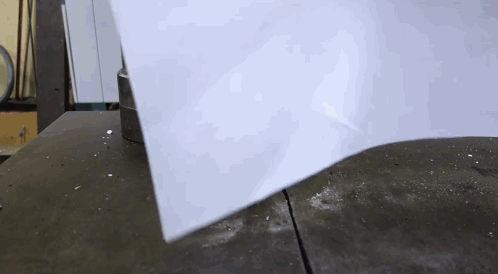

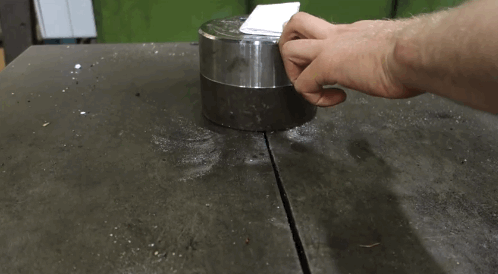
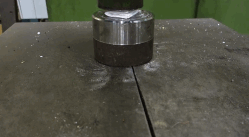
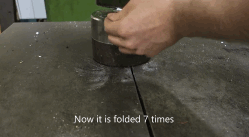
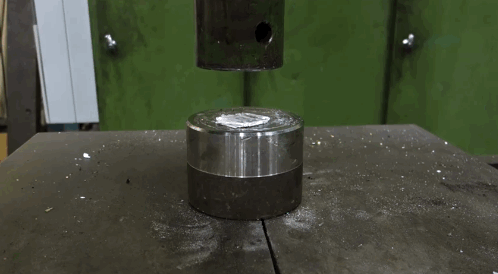
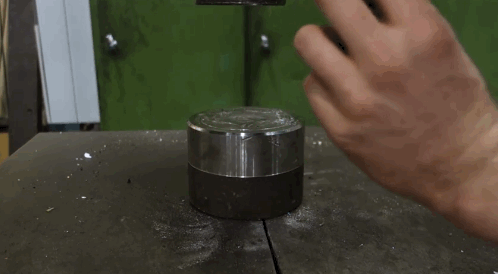
Watch: A hydraulic press causes a piece paper folded 7 times to explode into pieces.
Follow @the-future-now
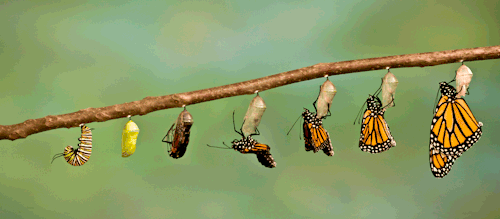
One of the smoothest, most beautiful color changes I’ve ever seen.
The reaction is methoxymethyl deprotection of one of my agonists with concentrated HCl in acetonitrile as my solvent. The color change doesn’t happen in THF!

Want to make a rubber egg? Your students do.
http://www.coffeecupsandcrayons.com/make-rubber-egg-science-experiment/ http://ow.ly/i/5haa2

Materials: 1. Food Coloring 2. Liquid Dish Washing Soap 3. 3 Tablespoons of Warm Water 4. 1 Tablespoon of Dry Yeast 5. 1/2 cup of 20-volume hydrogen peroxide from a hair salon 6. Empty 16 ounce Plastic Bottle 7. Small Cup 8. Safety Goggles 9. Tray Steps: 1. First, put on your safety goggles and place a tray in front of you. 2. Next, pour the hydrogen peroxide in the bottle. (Make sure to have an adult complete this step) 3. Then, add 8 drops of any food coloring of your choice in the bottle. 4. Next, add 1 tablespoon of liquid dish soap into the bottle and swish it to have the materials mix. 5. Then, combine the warm water and yeast together in a separate small cup and mix for 30 seconds. 6. Finally, place the bottle in the tray and pour the yeast water mixture into the bottle. Lesson: While doing this experiment, foam appears having each tiny foam bubble filled with oxygen. The yeast acted as a catalyst or helper to remove the oxygen from hydrogen peroxide. If you touch the bottle, you notice that it is warm. That means your experiment made a reaction called exothermic reaction because it creates heat.
-
 inxbr-blog liked this · 9 years ago
inxbr-blog liked this · 9 years ago -
 girlscoutmonster-blog liked this · 9 years ago
girlscoutmonster-blog liked this · 9 years ago -
 vintage-cate liked this · 9 years ago
vintage-cate liked this · 9 years ago -
 funscienceexperiments reblogged this · 9 years ago
funscienceexperiments reblogged this · 9 years ago
Hi everyone! I'm Ashley P. and I'm a Girl Scout who wants to make a difference in the world. Currently, I've been working on my Gold Award Project, which is a project where Girl Scouts solve an issue in their community to earn the Gold Award. The Gold Award is the highest award a Girl Scout can achieve. In my project, I'm addressing the issue on how there are a lack of women in the STEM field by creating a program to do fun science experiments with younger girls. Also, I constructed this blog for parents and children to do exciting and simple experiments with their kids to spark a passion in this subject like what happened to me as a child. I hope you enjoy and try to accomplish the experiments I post! Also, please have adult supervision while completing these experiments.
210 posts